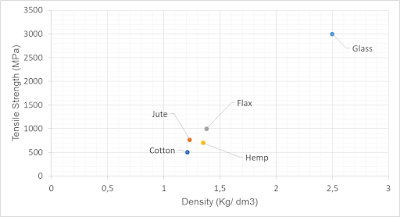Hello and welcome to a new post. Today I picked up the six strategic principles of Mark McNeilly’s book “Sun Tzu and the art of business” and tried to apply them in today’s VUCA (volatility, uncertainty, complexity, and ambiguity) plastics world.
I re-read this book recently and in my view, the principles apply still today and the one or other principle may help you in your next business management decision.
Overview – the six strategic principles
1. Win all without fighting: capturing your market without destroying it
2. Avoid strength and attack weakness: striking where they least expect it
3. Deception and foreknowledge: maximizing the power of market information
4. Speed and preparation: moving swiftly to overcome your competitors
5. Shape your opponent: employing strategy to master the competition
6. Character-based leadership: providing effective leadership in turbulent times
 |
| Overview - 6 strategic principles of Sun Tzu |
Detailed discussion
“Win without fighting” can be achieved in several ways. To start with, less visible and indirect attacks are preferred to gain market share and not triggering an immediate competitive response. In addition, if the defender starts to counter-attack to keep market share, it still takes between 11 and four years. The response is delayed due to strategic, bureaucratic, and political barriers, followed by the denial of the executives from the defending companies that the attack will be successful. Price increase or decrease attacks lead to faster reactions of the defending companies. After all, the aim is to gain relative market share, which ensures a long-term survival and growth of your business.
“Avoid strength and attack weakness” reminds me of the famous quote of C. Jung: “That which you most need, will be found where you least want to look”. There are situations, where the competitor’s weakness opens up attack opportunities for your business to apply your strengths there and win big. There are weak links along the value chain which are referred to as boundary points: manufacturing needs to interact with supply chain and supply chain with sales and service. These boundary points open up areas of weakness. The competitor may have strong manufacturing operations however is not strongly linked to regional distributors. This immediately opens up an opportunity for you to attack by reinforcing your distribution channels and capturing their customers. Another way is to avoid competitors at all by creating new markets (small pond, only player vs big pond and many players). Or being a first mover in emerging markets. Important is to know where the weaknesses are and when to strike. Also, hiding your weakness is important too.
“Deception and foreknowledge” is needed to conquer market share and is done by learning the capabilities, culture, mindset, and facts of your competitors. If you attack, you need to know what your competitor will do to counter-attack. Businesses are built up out of products, processes, and people. Learn all the details of your own products, process, and people, together with strengths and weaknesses. Capability of your business is as important to understand as what it is incapable of doing. Do you know which markets are fertile and allow your business to grow? Masking your intentions with deception is important too since it will leave competitors executives in the dark. Time and place of attack – those too must be hidden away.
“Speed and preparation” are crucial for your victory on the business battlefield. Start-ups and small companies are intrinsically faster compared to chemical giants. However, it is valid for all kinds of companies to move with speed and win before the competitors can even react. Surprise, shock and exploitation of opportunities are the big advantages of speed in the marketplace. Furthermore, all execution cycle times, including product development, production, delivery and customer service must be cut down. Preparation is essential to ensure rapid movement of everyone (5 P’s: proper planning prevents poor performance). Develop scenarios and play competitive reactions through. Important is that you hit your goals before the competitor is able to set defensive moves. Big corporations tend to spend a lot of time with reorganizations instead of attacking in full force with new products.
“Shape your opponent” can be done over a direct and an indirect approach resulting in a misdirection of your competitors attention. Key elements to support you can be alliances to increase your strength and decrease the strength of your competition. On the other hand, attention needs to be given that competitors do not shape one. Therefore, best is to not fall into routines with tactics and strategy.
“Character-based leadership” can be summarized as lead by example: bad times and good times should be shared with your people. Clarify as a leader your strategy and communicate in an effective manner so that all of your reports can carry it out, even in your absence. Missions must be clear and distinct, together with the right selected people to achieve them. In addition, personal development of the leader by reading about several subjects, listening well to others, and taking time to think is part of this too.
How do you see this? What are your favorite principles?
Thanks for reading and #findoutaboutplastics
Herwig Juster
Interested to talk with me about your plastic selection, sustainability, and part design needs - here you can contact me
Literature:
[1] Mark McNeilly - Sun Tzu and the art of business












